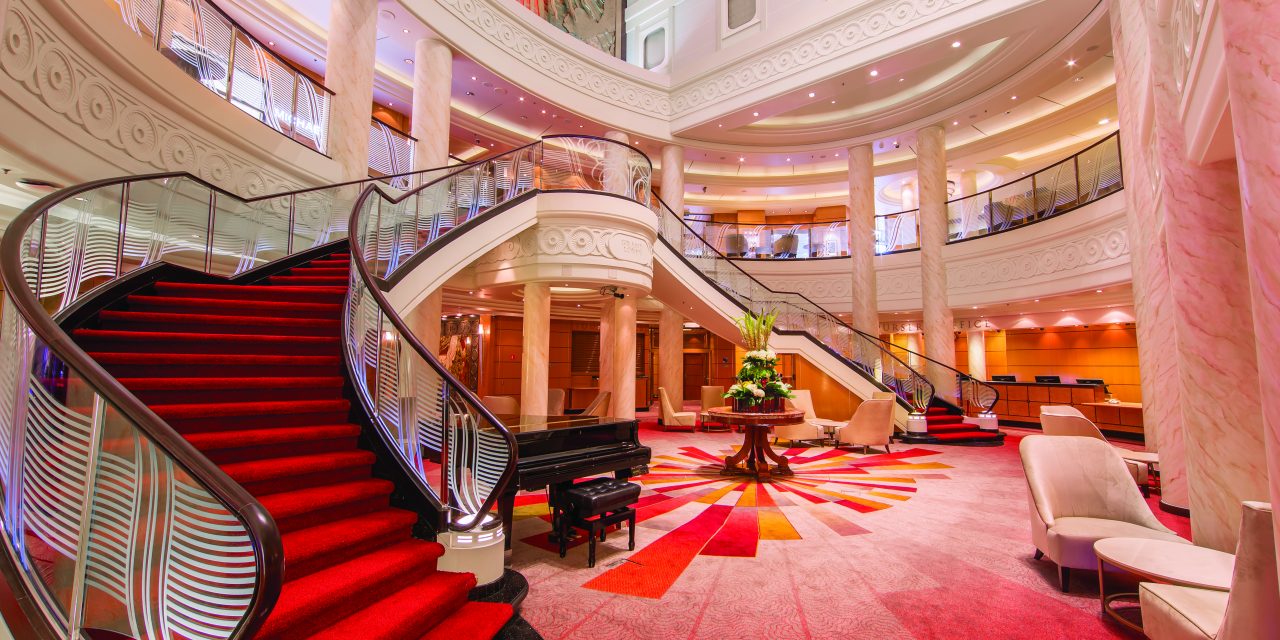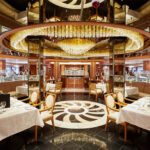First things first, this guide is for everyone who loves good old-fashioned, traditional cruising.
Going on any kind of cruise holiday is great (we shouldn’t have to tell you that) and it doesn’t matter what kind of ship you pick, you’ll have a good time but if you’re planning on going on a mega-ship then there are probably more suitable articles for you elsewhere on our site (head straight to our guides on Royal Caribbean for good measure).
Traditional cruising will involve older ships that aren’t included in the list of cruise lines that have changed the face of cruising altogether, and we’re here to cover the advantages and disadvantages of those ships!
We’ll be covering several different aspects of traditional cruising with you from how to spot it right through to who offers it but the first question we wanted to answer was…

Just What Is Traditional Cruising
When people refer to traditional cruising, they normally do so in a rather wistful tone whilst reminiscing about cruises back before the modern era of mega ships came about, way back in the golden era of cruising.
However for those in the know, it’s not only possible to still do a ‘traditional cruise, but you’ll still have a great time! The trick is in finding a cruise line that will give you that ‘traditional experience’.
Leading us on nicely to…

How To Spot A Traditional Cruise
Deciding to try a traditional cruise is a great start to what will be an unforgettable holiday, but once you’ve made that choice how do you then go about finding one? Unless you’re really lucky, most cruise companies won’t advertise their deals with a traditional cruise label so how do you know you’re booking the right cruise?
Fortunately it doesn’t matter too much as there’re are several different ways to spot a traditional cruise (which we’re obviously going to share with you!) Read on…

You might not recognise the ports of call – A good way to spot you may be booking a traditional cruise is by taking a closer look at your itinerary.
We’ve already said that we like cruising on mega-ships (and they certainly have their place) but they’ve definitely changed the face of cruising! Due to their size, most modern cruise ships can’t access a lot of ports anymore, they’re just too big!
Not only do the ports not have the facilities to handle such large ships; the places you visit probably can’t cope with 5,000+ tourists all disembarking at once either (and that’s assuming you only get one mega ship in at a time!)
One of the great benefits to a traditional cruise is that it will be on a much smaller ship which means that it will be able to get to the smaller, more quirky and interesting ports of call that the modern behemoths just can’t anymore.
Instead of being forced to dock at Civitavecchia to face an hour’s coach ride to Rome just so you can spend another hour in a queue to visit the Coliseum (again) you could spend a couple of relaxing days drifting down Italy’s Amalfi coast taking in some of the local villages along the way (we know which we prefer the sound of!)
Be careful however that you don’t get traditional cruising mixed up with small ship cruising (we know, we know, it’s confusing!)
Although the two will have many similarities small ship cruising can still be on a modern ship (just a small one) whereas a traditional cruise will also have some of the below features (that’s our hint for you to keep reading by the way).

The ship will be a lot older – For some reason the word ‘old’ has come to have a lot of negative connotations in modern parlance; if something’s old it obviously needs updating, renewing or replacing but that’s a massive shame in our opinion, after all you wouldn’t throw out a hundred year old bottle of wine would you?
The same can be said for some cruise ships.
A great way to spot a traditional cruise line is to look at the amount of emphasis they put on their heritage, history and traditions; cruise ships don’t get old, they just gain character.
Let’s use a land based holiday as an example… If you were booking a house by the sea for a week would you want an old cottage with a thatched roof, wooden beamed ceilings and a real fireplace or a two up, two down semidetached, new build?
Traditional cruising, as the name suggests, is all about enjoying the traditions of the ship you’re on and booking such a cruise will allow you, in a small way, to become a part of that heritage.

You’ll be able to book normal dining times! – Flexi dining; freedom dining; freestyle dining; dynamic dining; rotational dining; open dining.
We’re guessing if you’ve booked a cruise in the last year or two you’ll have come across some of these terms. Once you get down to the basics however they pretty much all mean the same thing. In essence you’ll be able to dine when you want, where you want, in whatever restaurant you want with who you want.
Now on the face of it there doesn’t seem to be anything wrong with that. After all who wouldn’t want to eat what they want, when they want, right? (In fact isn’t that one of the big appeals to cruising?)
The problem is it undercuts one of the things that we think makes a cruise holiday so great and that’s the social aspect of it.
A great way to spot a traditional cruise is to see if it’s offering traditional or set dining (the clue’s in the name). If it is you’re probably onto a winner!
Traditional (or set dining) is when the cruise line will allocate you a particular time (normally 6:00 or 8:00pm) and a particular table; you’ll then dine on that table each night for the duration of your cruise. On the face of it open dining may sound the better option but it misses the point completely in our opinion; the social aspect of cruising. Dining on the same table each night, getting to know new people, making new friendships (sometimes for well beyond the duration of the cruise); you miss out on all that with this new fad for casual dining and that seems like a shame to us.

What are the benefits?
Now that you know how to spot a traditional cruise you may be wondering just why traditional cruising is so great (after all so far all you have is our say so!)
Below then is some of the reasons we love traditional cruising so much…
You’ll get to know your fellow guests – A traditional cruise ship will, on average, carry between six hundred to a thousand guests; sometimes less but never more (in fact its size is another great way to spot a traditional cruise ship – we probably should’ve mentioned that earlier!) whereas some mega ships can carry over five thousand passengers! That means big crowds and big queues for anything you might fancy doing.
A traditional cruise on the other hand will offer a much more intimate experience. There’ll always be a quiet area of the ship to relax in if you need it but you’ll also be able to get to know your fellow guests a lot more; they (and you) won’t get lost in the hordes.
It may seem like a small point and is the kind of thing you might not notice when it’s gone but trust us, it really can make a holiday!

And the staff will get to know you – Not having thousands of guests to look after means the staff will be able to get to know you a lot better. On a mega-ship, if you’re very lucky and have a waiter who’s very good at his job, they may just learn your name but on a traditional cruise they’ll not only learn your name they’ll learn your dining preferences, your drink preferences, any allergies you may have and all those other foibles that a good waiter should know.
Not only that however, they’ll probably recognise you and remember all that the next time you book a cruise! (It sounds unlikely considering the amount of passengers they deal with in a year but we’ve seen it happen first hand time and time again)

No mega-ship means no tenders – We said earlier that mega-ships can’t get into the smaller, more interesting ports that traditional cruise ships frequent and whilst this is true they do sometimes still try.
Rather than squeeze into the dock though they offer something called a tender which is where you’ll be ferried over to the port from the ship in a small boat whilst the ship itself stays anchored out at sea.
Tenders are notoriously unreliable, often getting cancelled if the seas are too rough and who wants to be schlepped over in a small boat anyway?! Isn’t it much more relaxing and civilised to just stroll off the ship into the centre of town and then be able to get back on when you want without having to wait to be ferried back to the ship?

A Traditional Cruise line will actually enforce dress codes – As cruise ships have gotten bigger standards of dress have declined across all ships. As more and more people have boarded the cruise lines have had to appeal to a wider audience, which means causal attire. Even on ships that purport to still have a formal dress code it’s oft times not enforced very rigorously, if at all, much to the chagrin of passengers looking forward to the ‘traditional cruise experience’ of black tie and ball gown filled evenings.
Again, the clues in the name. A cruise line that likes to think of its self as traditional will offer formal evenings on its cruises and enforce the dress codes when they do.
Not for everyone perhaps but formal dinging goes hand in hand with traditional cruising.

It will feel like you’re actually on a ship rather than a hotel – When you first thought about taking a cruise we’re guessing you didn’t think to yourself “you know what I really fancy? A great big shopping mall with cabins really near it and maybe a rock climbing wall on the roof!”
Our guess would be you actually pictured yourself, cocktail in hand, leaning on a railing looking out to sea. That’s because the romance and a magic of a cruise holiday is being surrounded by an ocean. Modern mega-ships have all the bells and whistles you could wish for but they’re basically just floating hotels – you may as well go to Las Vegas!
If it’s the romance of the ocean you’re looking for then may we recommend you try a traditional cruise…
Who Offers it?
Excellent! Thanks for sticking with us this far, hopefully by now you know what traditional cruising is, how to spot it and why you should be looking for it in the first place. You should now be practically salivating at the thought of booking your first traditional cruise…
We’ve given you everything you could possibly need for spotting a traditional cruise on your own but being the helpful people we are we thought we’d give you a little more help. There are several cruise lines who are famed for offering traditional cruises. If you’re serious about trying a traditional cruise (and why wouldn’t you be after reading this?) then we suggest you take a closer look at one of these companies…
 Cunard This is a traditional cruise line who enable the sophisticated traveller to experience an authentic ocean voyage, as they sail ocean liners, not ships! These ocean liners are purpose made to sail all year round across the world with…
Cunard This is a traditional cruise line who enable the sophisticated traveller to experience an authentic ocean voyage, as they sail ocean liners, not ships! These ocean liners are purpose made to sail all year round across the world with…
 Fred Olsen Welcome to the traditional cruise line proud to call themselves a brand that makes you feel at home onboard their ships. With 150 years of sailing heritage behind them, having started way back in 1848, you can put your trust in them to…
Fred Olsen Welcome to the traditional cruise line proud to call themselves a brand that makes you feel at home onboard their ships. With 150 years of sailing heritage behind them, having started way back in 1848, you can put your trust in them to…
 Cruise & Maritime If you’ve ever wanted to cruise with style, heritage and comfort, then traditional cruising is probably for you. If that’s the case, then you should also consider CMV!
Cruise & Maritime If you’ve ever wanted to cruise with style, heritage and comfort, then traditional cruising is probably for you. If that’s the case, then you should also consider CMV!











